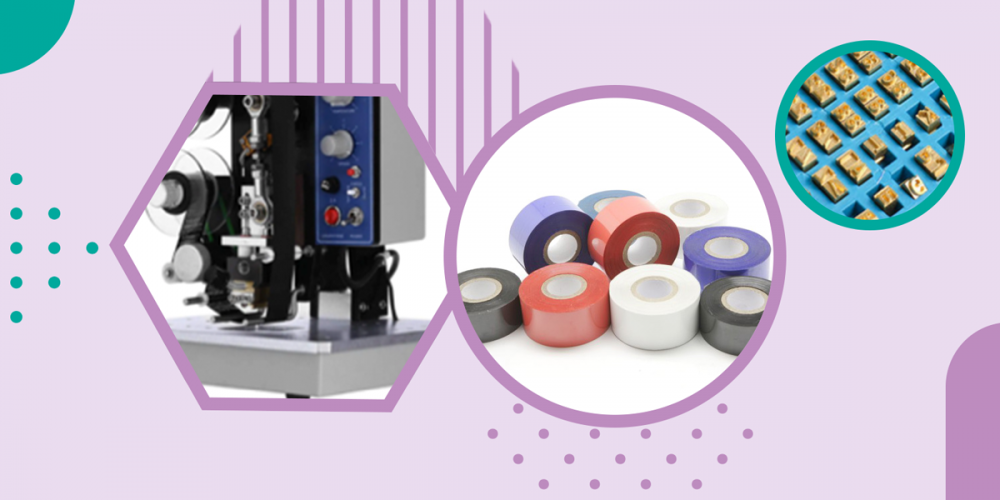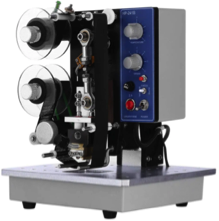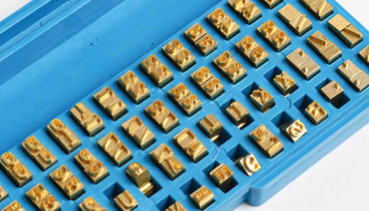What is Hot Stamping and Hot Stamping Foil

Hot Stamp Printing Process
 Hot stamping for the flexible packaging market uses analog hot stamp dies in conjunction with a specially formulated hot stamp foil ribbon to produce a static image on a specific substrate. The heated die (text, logo etc.) is pressed onto the ribbon, melting the ink onto the substrate. These printers carry a low initial cost (up to 50% less than thermal transfer overprinters) and produce an extremely durable image. For many years, these printers have been an excellent method to print static information on flexible packaging in both continuous and intermittent applications.
Hot stamping for the flexible packaging market uses analog hot stamp dies in conjunction with a specially formulated hot stamp foil ribbon to produce a static image on a specific substrate. The heated die (text, logo etc.) is pressed onto the ribbon, melting the ink onto the substrate. These printers carry a low initial cost (up to 50% less than thermal transfer overprinters) and produce an extremely durable image. For many years, these printers have been an excellent method to print static information on flexible packaging in both continuous and intermittent applications.
Hot Stamp Dies
Hot stamp dies, usually made of brass or steel, often need to be replaced due to wear or lost pieces. Individual characters are often small (1/4 to 3/8 in.), which makes them hard to handle and easy to lose. It’s common to have to replace a full set of type when only one character may be needed.
Hot Stamp Foils
IMP offers a range of hot stamping coding foil products, including regular foil, cable foil, leather foil and color foil products. These products are compatible with a variety of printers and inks, including API GT, DC8 Inks, Norwood 172 Ink and Kurz CEL512, CN512, CN511 Inks. The coding foils come in a variety of colors, sizes and formulations.

Hot Stamp foils are extremely durable but have some drawbacks. Because of the heat required in the printing process, hot stamp ribbons are usually thicker, and there for shorter than traditionalthermal transfer ribbons which drives up the cost. In addition, hot stamp printers leave large gaps between print images, which results in wasting a large portion of the ribbon.
Hot Stamp Markets
Hot stamp printing can be used on cartons, labels, poly bags and pharmaceutical bags. Hot stamp imprinters are found throughout the food, beverage, chemical, personal care, pharmaceutical, medical device, electronics, aerospace, military and industrial markets.
Hot Stamp vs Thermal Transfer Overprinting
Thermal transfer overprinting (TTO) is a printing process that offers an alternative to hot stamp and other traditional analog printing methods. TTO uses a near-edge printhead vs the more common flat head printhead. Thermal transfer overprinting creates high-quality and high-definition marks, codes and images to a flexible film or label by using a thermal printhead and a wax-resin or resin thermal transfer ribbon.
Historically, hot stamp machines were sufficient for package coding, but evolving business requirements are fueling demand for digital solutions. Hot stamp machines are unable to image variable data which limits the usefulness of the equipment. Most importantly, TTO printers were traditionally more expensive than hot stamp equipment. That has changed. TTO printers have come down in price and therefor are being installed at an increased rate.
To ready more about TTO, how and where to sell it, visit our Knowledge Base publication on Thermal Transfer Overprint.
IMP – Your Hot Stamp Ribbon Experts
As one of the world’s largest hot stamp ribbon manufacturers, IMP provides a versatile line of coding foils capable of low energy printing at high speeds and compatible with a wide range of substrates.Reach out to us or contact your IMP representative today for pricing, free ribbon samples, or just to strategize on ways we can help you expand your ribbon and label sales.

